North American Pre-Orders Opened for TPCast’s Wireless Adapter for HTC Vive
by Anton Shilov on November 13, 2017 1:00 PM EST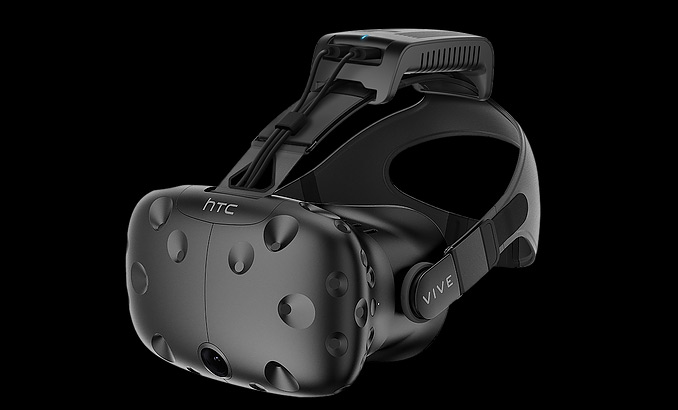
TPCast has finally begun to take North American pre-orders for its wireless headset adapter for the HTC Vive. Already released in China, the unit offers untethered operation of the HTC Vive for five hours as well as minimal latencies. The cost for this wireless motion is $299.99, and the company plans to begin shipments of the device later this month.
TPCast’s wireless adapter for Vive uses 60 GHz and other radios to connect the VR headset to the PC and thus eliminate cables, one of the major drawbacks of today’s high-end VR gear, and enables a greater freedom of movements for gamers. Common sense for most users put wireless connections as having a higher input lag that wired interconnections which may affect user experience, although TPCast claims to have solved this. It claims that the wireless adapter has an input latency of 2 ms, which is lower than “<7ms latency” featured by HTC’s wireless accessory for Vive created with Intel.
The relatively low latency of TPCast’s wireless adapter for Vive is enabled by Lattices’ MOD6320-T/MOD6321-R WirelessHD modules that are used to transmit VR display content from PC to the headset. Speaking of Lattice, the device also uses Lattice’s SiI9396 600 MHz HDMI bridge ICs and LatticeECP3 SERDES-based FPGA, so the company is a key developer of chips for the adapter. Neither TPCast nor Lattice disclose actual transmission rate that is used for the wireless adapter for Vive, but we know that the WirelessHD is speced for 10 – 28 Gbps, well in excess of the 8.2Gbps required for the Vive's hardware HDMI 1.4 connection..
The TPCast Wireless Adapter for Vive kit consists of several pieces: the transmitter module that plugs to the Vive Linkbox (which is connected to the PC), the receiver that connects to the Vive headset, and an Anker PowerCore 20100 mAh (100.5 Wh) accumulator that provides up to five hours of battery life to the head mounted display. (interesting aside: at that capacity, it cannot be taken on-board aircraft.) The unit also comes with a charger, a router and a bunch of cables to make setup easier. It is noteworthy that TPCast requires customers to use its own router because it transmits information back from the HMD to the PC.
The TPCAST Wireless Adapter for Vive is now available for pre-order, at a price of $299.99, via Amazon, Newegg, and the company’s own website. TPCast plans to start shipments of the device on November 24 (for some reason, Newegg mentions November 20 as the release date), so expect retail availability of the unit after this date.
Related Reading:
- HTC & Intel Partner on WiGig Wireless for Vive VR Headset
- HTC Offers Vive + GeForce GTX 1070 + Fallout 4 VR Bundle for $799
- Logitech and HTC Team Up to Integrate Physical Keyboards Into VR Environments
- HTC Permanently Cuts Price of Vive to $599
- HTC Announces New Standalone Vive VR Headset with Google Daydream Support
Source for the diagram: UploadVR
Source: TPCast


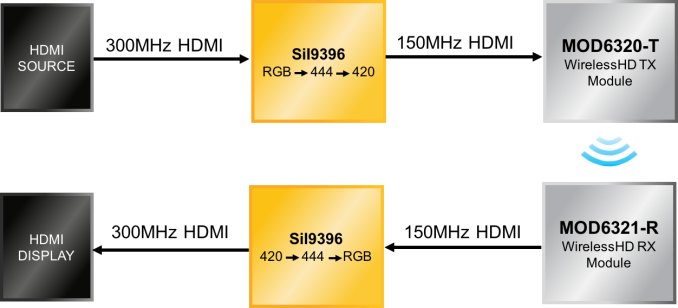
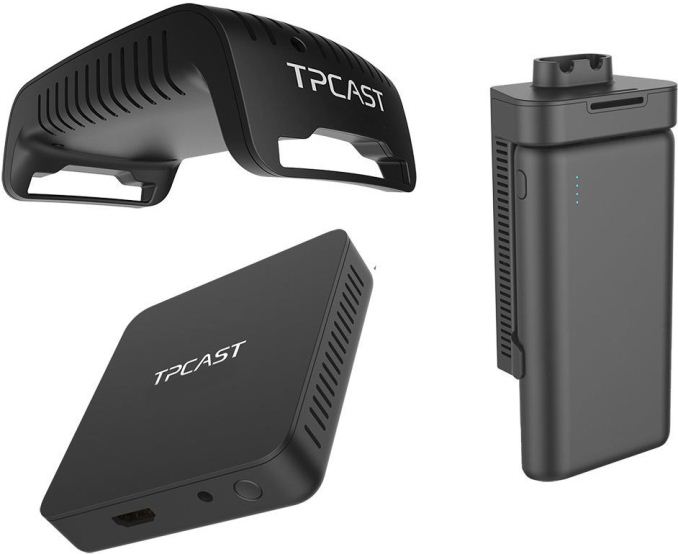
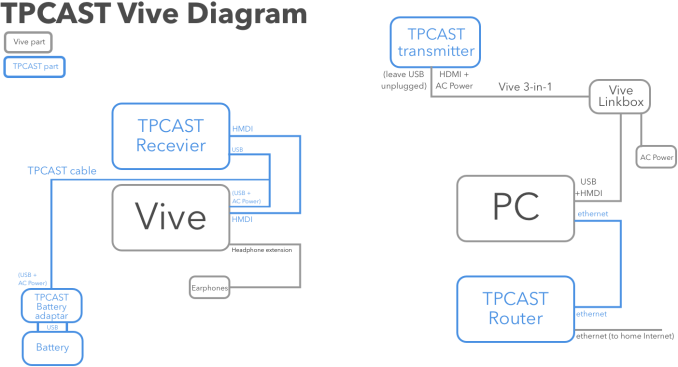
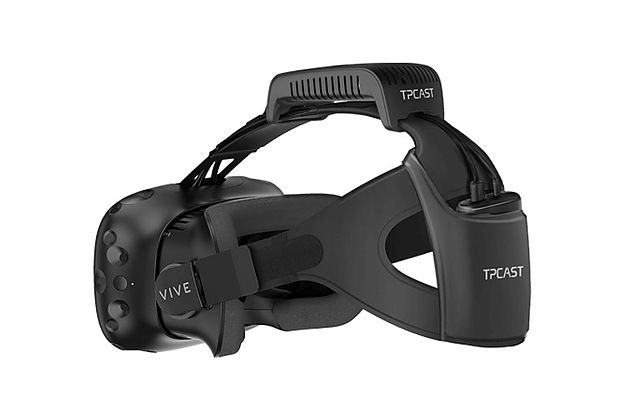








28 Comments
View All Comments
DanNeely - Monday, November 13, 2017 - link
If I'm reading their FAQ correctly, the dongles only do HDMI from PC-Vive; the router is the way they kludged traffic going from the VIVE back to the PC. I'm not sure why they couldn't either have the Vive dongle connect to your existing wifi, or setup an adhoc wifi link between their pair of dongles.https://www.tpcastvr.com/faq
JoeyJoJo123 - Monday, November 13, 2017 - link
I think the tl;dr is that it uses WirelessHD technology to communicate what would've been the HDMI signal over a wireless signal.The video signal goes from PC -> Their Proprietary Router -> air (wireless signal) -> proprietary receiver attachment on ViVe -> wired to the ViVe headset.
extide - Tuesday, November 14, 2017 - link
No, the video is transmitted from the TPCast Transmitter, which uses wireless HD. If you look in the diagram you can see it is separate from the TPCast Router. It also mentions to leave the USB unplugged from the TPCast Transmitter. I would imagine that the TPCast Receiver connects with the TPCast Router to transfer the USB data to the PC over ethernet.PC -> HDMI -> Vive Box -> TPCast Transmitter -> wireless -> TPCast Receiver (for video)
TPCast Receiver <-> TPCast Router <-> Ethernet <-> PC (for USB and other control signals)
willis936 - Monday, November 13, 2017 - link
Oh hey I was in the market for this a few years ago. I ended up going with an active (non compliant, headache inducing) HDMI extender over 2x cat 5 ethernet.Charlie22911 - Monday, November 13, 2017 - link
Almost ordered one, but this router nonsense is a dealbreaker.mrvco - Monday, November 13, 2017 - link
The router requirement does seem odd. Maybe they're assuming that the customer has no Wifi, but then all they really need to keep things simple is a USB WiFi adapter connected to the PC (or even better, integrated into the LinkBox) that is preconfigured to communicate with the headset module.DanNeely - Monday, November 13, 2017 - link
My guess is that using their router instead of your existing wifi lets them be heavy handed with QoS favoring VR traffic over everything else. Replacing your network instead of running a separate connection reduces the total number of networks competing for spectrum by one.What worries me is that if that's why they're doing it then it'll struggle in apartment buildings or other denser urban areas where too many wifi networks are fighting over spectrum it's going to glitch out when it spends too long in backoff mode. IMO, if I'm right about why they did it, it's a case where they should've used 60Ghz radios both ways even if they're more expensive than commodity 5Ghz parts. $300 is already a very premium accessory; and if its glitchy a lot of people are going to get a permanent negative impression of your company.
edzieba - Monday, November 13, 2017 - link
" It claims that the wireless adapter has an input latency of 2 ms, which is lower than “<7ms latency” featured by HTC’s wireless accessory for Vive created with Intel."It's also a lot lower than the 5ms the SiBeam WHD modules alone claim as their average latency, WITHOUT taking into account the additional lossy compression/decompression stages used to drop the bandwidth needed enough to use the 2015-era WHD modules.
I've yet to see anyone actually perform a quantitative test of the TPCast system to confirm it's true latency.
007ELmO - Wednesday, November 15, 2017 - link
I'm sure it's going to have unnoticeable lag. My projector's got 60GHZ wireless 1080p also and the lag is just not there, I think Epson said it adds 1-2ms!Handi101 - Wednesday, December 13, 2017 - link
There is no lag. If there was, I would get a headache.